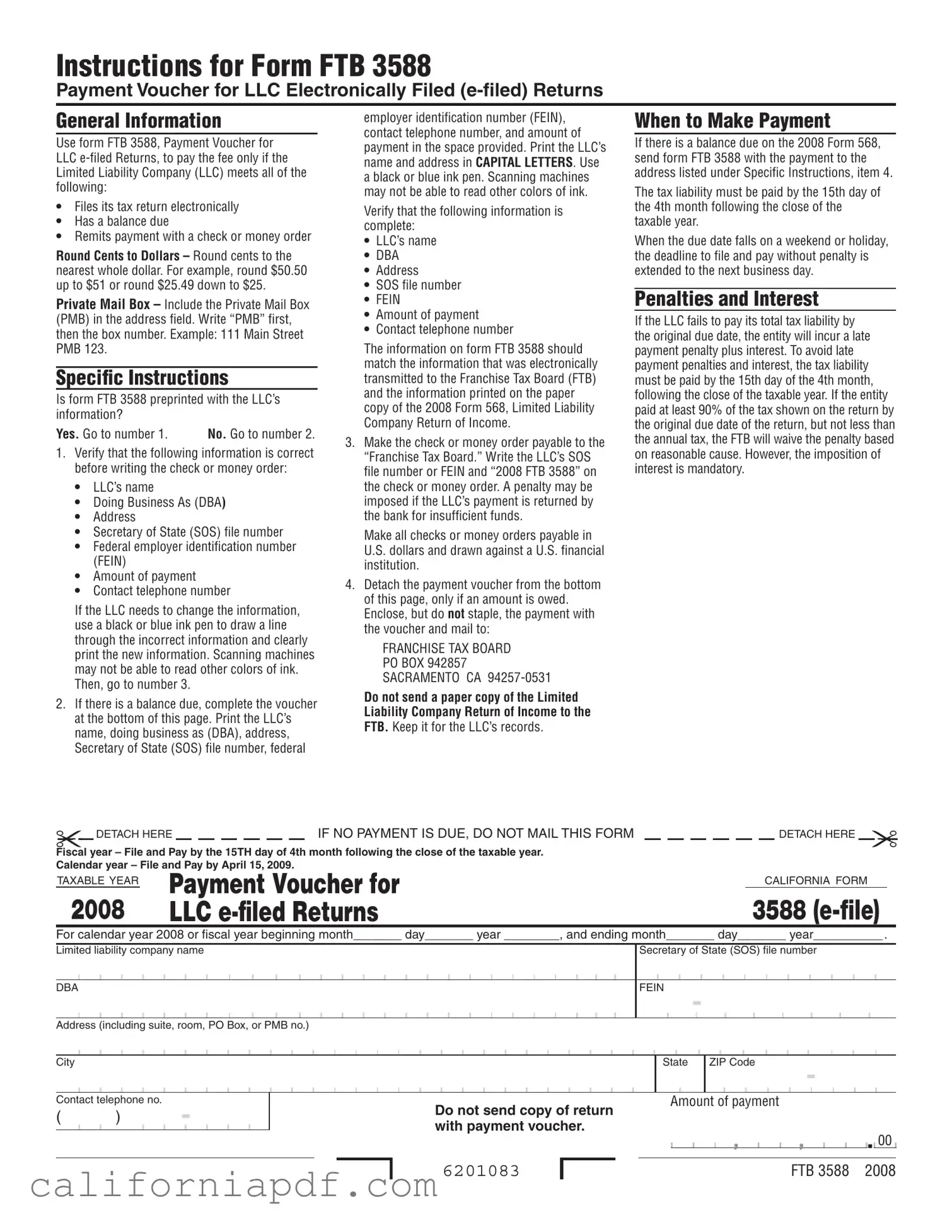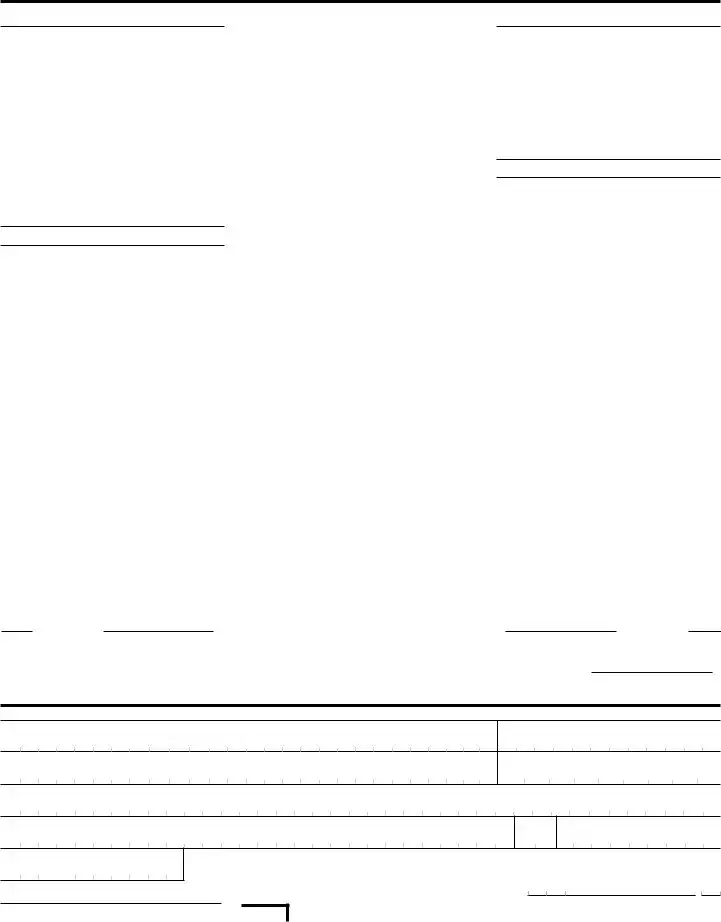The California Form 540-ES, or Estimated Tax for Individuals, bears a notable similarity to the Form FTB 3588. Both serve as vehicles for tax payments, albeit for different taxpayers; the 540-ES is for individual taxpayers making estimated tax payments, while the FTB 3588 is for LLCs settling their electronically filed return payments. Each form includes sections to specify the amount being paid and taxpayer identification information, ensuring that payments are correctly applied to the taxpayer's account. This structure aids in maintaining organized and accurate tax records for both the payer and the taxing authority.
The Form 1040-ES, the Federal counterpart of California's 540-ES, is used by individuals to remit estimated tax payments to the IRS and shares a fundamental purpose with California's FTB 3588. While the FTB 3588 is specifically for LLCs making payment with their e-filed returns within California, the 1040-ES applies to individual taxpayers making federal estimated tax payments. Both documents necessitate the inclusion of identifying and payment information, facilitating the correct allocation of funds to the taxpayer's obligations at their respective tax authority levels.
California Form 100-ES, or Corporation Estimated Tax, parallels the FTB 3588 in its function for corporations to make estimated tax payments. Like the FTB 3588 ensures LLCs meet their state tax obligations through e-filing, the 100-ES enables corporations to comply with estimated tax payments throughout the year. Both forms contain sections for taxpayer details and payment information, streamlining the process for entities to remain in good tax standing with the state's Franchise Tax Board.
Form FTB 3536, or Estimated Fee for LLCs, is similar to the FTB 3588 as it pertains specifically to LLCs within California, albeit for estimated fee payments rather than balance due on e-filed returns. Both forms require detailed identification of the LLC, including name, address, and identifying numbers. These forms ensure LLCs have a structured method for fulfilling different types of tax-related obligations, emphasizing the state's approach to managing and collecting revenue from business entities.
California's Form 3522, LLC Annual Tax V booklet, shares similarities with the FTB 3588 in that it is another document aimed at LLCs within the state. While the 3522 is intended for the payment of an annual tax, the FTB 3588 is utilized for payments accompanying electronically filed returns. Both serve critical roles in the tax cycle of an LLC, offering a structured means for these entities to comply with distinct financial obligations to the state.
The Sales and Use Tax Return form by the California Department of Tax and Fee Administration closely mirrors the purpose of the FTB 3588 but in the context of sales tax. This form is used by businesses to report and remit sales tax collected from customers, similar to how the FTB 3588 is used by LLCs to remit their owed taxes to the state. Both forms play pivotal roles in the collection of taxes, albeit for different types of taxes, underscoring the varied manners in which businesses and entities fulfill their tax responsibilities.
Form FTB 3557, Application for Certificate of Revivor, though not a tax payment form, shares a connection with the FTB 3588 in the broader scope of maintaining tax compliance. While the FTB 3588 facilitates the payment of tax dues for LLCs, the FTB 3557 is used by businesses seeking to restore their good standing with the state after suspension or forfeiture for tax noncompliance. Both forms are essential to the regulatory framework that ensures businesses meet their California tax obligations.
Finally, the Property Tax Statement sent by local California county tax collectors to property owners shares a similar essence with the FTB 3588. Although focused on property taxes owed by individuals and businesses on real estate, both documents represent formal requests for payment to a government authority. They require the payer to submit relevant identification details and the payment amount due, reinforcing the structured approach to tax collection across different government levels and tax types.



 ,
, 

